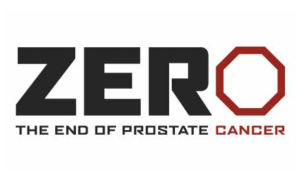While neither charity auctions nor the various rules governing them are new, nonprofit managers have numerous questions about them. There are many examples of inadequate auction procedures by both large and small organizations. Charity auctions (silent or live) typically sell merchandise or services that are donated. The first requirement for the organization is to acknowledge the donated item. This step is often missed as the organization is more concerned about reporting to the purchaser and not the donor.
If the donated item might have a fair market value (FMV) of $250 or more, the organization should be sending acknowledgement letters with certain required language, including that no goods or services were received in exchange for the donation. This acknowledgement is required if the donor is going to take a tax deduction.
The organization should not put the value of the donated item on the acknowledgement letter, even though the donor might have provided it. The donor is responsible for valuing the donated item on a tax return and the rules can vary significantly. For example, if the donation is from the donor’s inventory, the donor’s deduction might be different than if the donation is from the donor’s art collection.
The donor might give the charity a federal Form 8283 to sign if the gift’s appraised value is greater than $5,000. When such an item is sold at the auction, the charity will be required to file federal Form 8282 with the Internal Revenue Service (IRS) that indicates the donated item has been sold and the price at which it had been sold.
Similar acknowledgement rules apply to the purchasers at the auction when they spend $250 or more on an item. The organization should send them an acknowledgement of the purchase. In this case the letter should tell them how much of the purchase price is for the goods and services received (not deductible) and how much is in excess of that amount (deductible). The amount for goods and services should be the estimated fair market values of the item.
For examples of acknowledgement letters and for fairly complete information on gift acknowledgements of all kinds, see IRS Publication 1771.
Auction donors often provide use of a vacation home or personal services (for example, cooking a dinner). However, donations for use of facilities or services are not deductible as a charitable donation. It might be prudent for the organization to tell donors in advance that it is their understanding that these types of gifts are not tax deductible, but that they should consult with their tax advisors.
There is another rule requiring the organization to inform the donor of tax deductibility for event tickets or purchases of $75 or more (IRC Section 6115(a)). Failure to do this can result in penalties to the organization and disclosure of compliance is one of the questions on the federal Form 990. Under these “quid pro quo rules” for event tickets or purchases of $75 or more the organization is responsible for informing the purchaser as to how much of the purchase price is a donation and how much is for goods and services. In other words, any excess over the FMV of an item is a donation. If the purchase price does not exceed the FMV, then there is no donation by the purchaser (which is often the case).
The easiest way to inform auction purchasers of fair market value is to provide the information on the program. The value of each item should be listed and there should be prominent language saying that only the amount paid in excess of value is allowable as a charitable deduction. It is important that the retail value of the item be used on this listing — not simply the cost of it, as it might have been purchased at a discount or produced by the donor. The donor often can provide this information. If not, the organization will have to do some research. The valuation can be a good faith estimate.
Another area often ignored with charitable auctions is sales or local tax. Most states (and some localities) tax sales of merchandise by charitable organizations. Having an exemption from paying sales tax is not an exemption from collecting it. Many organizations already are engaged in the sale of merchandise and are registered with the state where the auction is occurring. However, when an organization does not ordinarily engage in merchandise sales or is conducting an auction in another state, it might be required to register and collect sales tax, even for a one-time event. Some states have exclusions from registration and collection of tax for “occasional” sales and for charitable fundraising. It is important to research sales tax issues well before the planned auction date.
Lastly, for the federal Form 990, charitable auctions will be reported as a fundraising activity on the revenue section (Part VIII) and, if above certain thresholds, on Schedule G. The donation portion of the receipts is reported on Line 1c for Part VIII as donations, while the value of purchased items (the FMV) goes on line 8a of Part VIII as gross income. Schedule G requires a listing of all fundraising events with a little more detail. The net income of the fundraising event will generally be shown in the “excluded” column of Part VIII as it usually fits an exclusion from unrelated business income either because of selling donated merchandise, use of primarily donated merchandise in the activity or because the activity is not regularly carried on (once a year or less in frequency).
While charity auctions can be lucrative fundraisers, it is important to know and comply with the rules to keep the IRS, donors and state taxing authorities happy. NPT
R. Michael Sorrells, CPA, is national director of tax services for BDO USA, LLP. His email is [email protected]










